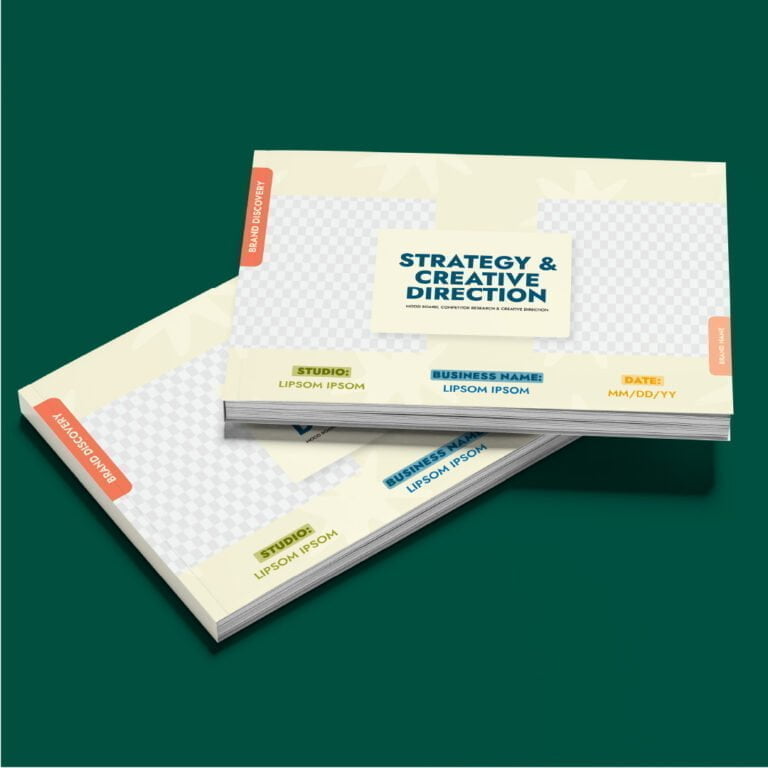In today’s fast-paced and highly competitive business environment, having a strong brand strategy is critical to success. A brand strategy is a long-term plan that outlines how a company will create and maintain its brand identity to achieve its business goals. It involves clearly understanding the target audience, analyzing the competition, and defining the company’s unique selling points.
Key Takeaways for Creating an Effective Brand Strategy
The following are the key takeaways for creating an effective brand strategy:
- Conduct market research: To craft an effective brand strategy, it’s crucial to understand your target audience’s needs and preferences. You can conduct market research to get insights into what motivates them.
- Create a unique brand identity: Your brand identity will help you stand out from the competition. It includes elements such as your logo, color scheme, typography, and voice.
- Craft an effective marketing plan: After creating your unique identity, crafting an effective marketing plan is necessary to ensure that it resonates with your target audience. This includes messaging that aligns with your values while also being engaging for customers.
- Evaluate and adjust: Your business should be open to change as no one approach is perfect. Continuous evaluation of customer feedback or changes in the market will help you make adjustments where necessary.
Definition of Brand Strategy
A brand strategy is essentially a roadmap for how a company will build and maintain its brand identity over time. It involves creating a set of guidelines that dictate how the company presents itself to the world, including its name, logo, visual identity (color scheme, typography), messaging, and overall tone. The goal of a brand strategy is to create consistency across all touchpoints so that customers have a clear understanding of what the company stands for.
Developing an effective brand strategy requires careful planning and execution. It involves conducting market research to understand customer needs and preferences, analyzing competitors to identify gaps in the market, and defining what makes your own company unique.
Importance of Brand Strategy in Business Success
A strong brand strategy is critical for businesses looking to differentiate themselves from competitors and establish themselves as leaders in their industry. A well-defined brand can help increase customer loyalty by creating an emotional connection with customers based on shared values or beliefs.
This can lead to increased sales over time as customers become more likely to return for repeat purchases. Brand recognition is also important for attracting new customers.
When potential customers come across your business online or offline, they should be able to easily recognize your branding elements such as logos or color schemes which builds trust with them even before they interact with your products or services. Having a clear and consistent message across all channels helps companies build credibility with their audience which translates into increased customer trust and loyalty over time.
This is particularly important in today’s world where customers are bombarded with information from various sources and are becoming increasingly skeptical of marketing messages. By creating a strong brand strategy that clearly defines your unique selling points, you can build trust with customers and establish a long-term relationship with them.
Research and Analysis
Conducting Market Research to Understand Target Audience
When creating a brand strategy, it is essential to have a deep understanding of your target audience. Conducting market research can provide valuable insights into your audience’s behavior, preferences, and needs. There are several methods to collect data about your target audience, such as surveys, focus groups, or social listening.
Surveys can be distributed online or offline and aim to gather quantitative data about the audience’s opinions on specific topics. They offer structured questions with predefined answers that allow for easy analysis and comparison between different respondents’ answers.
Focus groups are small group discussions led by a moderator that aim to understand the participants’ attitudes, beliefs, and motivations. They are particularly useful when exploring complex topics or testing new products or services.
Social listening involves monitoring social media channels for mentions of your brand or industry-related keywords. It provides insights into what people are saying about your brand online and how they perceive it.
Analyzing Competition to Identify Unique Selling Points
Analyzing your competition is critical in defining what sets you apart from them and identifying unique selling points (USPs). A USP is a feature or benefit that differentiates your brand from competitors in the eyes of consumers. Start by identifying direct competitors: brands that offer similar products or services in the same market segment.
Then analyze their USPs: what makes them attractive to their target audience? What do they do differently from other brands?
Once you have identified the competition’s strengths and weaknesses, look for opportunities where you can differentiate yourself from them. Maybe there is an unmet need in the market that you could address?
Or perhaps you could offer better customer service than they do? By analyzing your competition thoroughly, you will be able to identify areas where you can excel and set yourself apart from others truly.
Identifying Brand Values, Mission, and Vision
Before creating a brand identity or marketing plan, it is crucial to define your brand’s values, mission, and vision. These elements form the foundation of your brand strategy and communicate what your brand stands for.
Brand values are the guiding principles that inform every decision your brand makes. They represent what your brand believes in and stand for.
The mission statement defines the purpose of your business beyond making a profit. It should be concise and understandable while capturing the essence of what you do.
A vision statement outlines where you see your company going in the long term. It should be aspirational and reflect what you hope to achieve as a business.
When defining these elements, make sure they align with each other and reflect the unique aspects of your business. They will guide all future communication efforts with customers and stakeholders about who you are as a brand.
Brand Identity Development
Creating a unique brand name and logo
A brand’s name and logo are often the first things that come to mind when thinking about a company. Therefore, it is critical to carefully consider these elements during the brand development process. A unique and memorable name can set your brand apart from competitors and help consumers remember your business.
Similarly, a well-designed logo has the power to communicate key brand attributes and values. When creating a brand name, it is essential to consider factors such as ease of pronunciation, memorability, and legal availability.
It’s also important to ensure that the name aligns with your brand values and resonates with your target audience. Additionally, conducting trademark searches before deciding on a name can save time and resources down the line.
Logos play a significant role in visual identity development. The design should reflect your company’s personality while being simple enough for people to recognize quickly.
Logos may employ typography alone or combine text with graphic elements such as icons or symbols. Whichever approach you choose, ensure that it aligns with your desired messaging tone.
Developing a consistent visual identity (color scheme, typography, etc.)
A successful branding strategy requires consistency across all touchpoints where customers interact with the business – online or offline – any deviation in messaging or presentation risks diluting its impact on potential customers. One way businesses maintain this consistency is through visual identity – color schemes; typography; imagery; packaging; advertising materials like brochures; website design including graphics layout e.t.c., all consistent throughout all customer-facing interactions.
Color scheme selection should be guided by psychological color theories and how these colors make customers feel towards their product/service offering. Typography selection must prioritize legibility & uniqueness along with existing design trends for modernity’s sake – they should never overlook readability for stylishness’ sake.
Crafting a brand voice and tone
Your brand’s voice speaks to the personality of your business. Tone shifts to suit the message, but your voice remains unchanged.
The tone can vary between formal and informal, depending on the audience. The personality of your brand is conveyed by your choice of language, style, humor, and emotion.
One way to create consistent messaging is through a style guide that outlines aspects such as vocabulary to use when communicating with customers and social media guidelines for employees who may be representing your brand online. When developing a brand voice, it’s crucial to keep in mind the target audience.
For example, a business targeting millennials may want to adopt a more casual or irreverent tone than one that targets baby boomers. Over time as new products emerge or messaging evolves with time, revisiting and refreshing the brand’s tone can ensure it remains relevant in an ever-changing landscape.
Marketing and Communication Plan
Defining marketing goals and objectives
Before developing a marketing plan, it is crucial to define your marketing goals and objectives. These goals should align with your overall business objectives and be specific to what you want to achieve through your marketing efforts. It may include increasing brand awareness, generating leads, improving customer retention, driving sales, or launching a new product.
Setting SMART (specific, measurable, achievable, relevant, time-bound) goals can help you stay focused on what matters most for your business. For example, if your goal is to increase website traffic by 20% in the next six months through SEO efforts, you can track progress using tools like Google Analytics and adjust the strategy accordingly based on data.
Developing messaging that aligns with brand values and resonates with target audience
Messaging is an essential aspect of any successful marketing campaign because it helps convey the value proposition of a product or service to the target audience. Messaging should effectively communicate the brand’s unique selling points while also resonating with what matters most to consumers.
To develop effective messaging that aligns with brand values and resonates with target audiences requires understanding customers’ pain points or challenges they are looking to solve. A good starting point is creating customer personas that represent different segments of your target audience.
Once you have identified key buyer personas for your products or services research their needs through surveys and focus groups. Study social media activity surrounding their discussions about their needs as well as their pain points in relation to those needs in order to tailor messaging around solutions they’re searching for.
Choosing appropriate marketing channels (social media,email marketing, advertising)
After setting SMART goals for achieving them by defining them in detail plus creating effective messaging that resonates with targets audiences,the next step involves choosing appropriate channels where you will reach out to these audiences. Social media, email marketing, and advertising are the most common marketing channels businesses use to reach their target audiences. However, it is important to choose channels that align with your audience’s preferences for consuming information.
Each channel has its strengths and weaknesses. Social media platforms like Facebook, Twitter, Instagram offer cost-effective ways to generate brand awareness while targeting specific demographics with promotions or ads.
Email marketing is a useful channel for building customer relationships by sending targeted campaigns with valuable content. Paid Advertising on platforms such as Google Ads can be a powerful tool for driving sales or leads by targeting specific keywords or search terms related to your product or service.
An effective marketing plan is essential for any business looking to build brand awareness and drive sales. Developing SMART goals, crafting effective messaging based on audience research and choosing the right channels where you will communicate with your audience are all key components of creating a successful plan that delivers results for your business.
Implementation and Evaluation
Once a brand strategy has been developed, it is crucial to implement it consistently across all touchpoints. This means that the brand should be represented in a similar manner on the website, social media profiles, packaging, and any other points of contact with customers.
A consistent look and feel will help reinforce the brand’s image in customers’ minds and create a cohesive experience for them. One way to ensure consistency is to create a style guide that outlines the visual elements of the brand, such as color palette and typography.
This guide can be referred to by anyone creating content for the brand to ensure that everything stays on-brand. Additionally, regular check-ins with team members responsible for implementing the strategy can help identify areas where consistency may be lacking.
The Importance of Measuring Success
Measuring the success of a brand strategy is essential in determining whether it is effective or not. Without metrics in place, there is no way to know if the strategy is achieving its goals or if adjustments need to be made. Defining clear objectives at the outset of developing a brand strategy helps make these evaluations more straightforward.
Some common metrics used to measure success include an increase in website traffic or social media engagement rates. Sales figures are another important metric when evaluating marketing efforts because they reflect changes in customer behavior related to branding efforts.
Adjusting Strategies Based on Customer Feedback
Customer feedback provides valuable insight into what’s working regarding your branding efforts—and what isn’t. Listening carefully and responding thoughtfully will help brands make necessary adjustments based on feedback gathered from both happy and unhappy customers.
Brands can gather feedback through various channels such as customer surveys or online reviews. It’s important also to analyze data from customer service interactions as well as social media comments or messages directed towards your business’s accounts online.
Upon reviewing this information, brands should adjust their strategies accordingly—tweaking anything from messaging, to design, or even brand identity. Doing so will show customers that their input is valued and reinforce the brand’s commitment to their satisfaction.
Conclusion
Creating a brand strategy is a vital step in ensuring the success of your business. A well-crafted brand strategy can help you stand out from the competition, establish a connection with your target audience, and create a strong reputation in your industry. The process of developing a brand strategy involves conducting thorough research, defining your brand identity, crafting an effective marketing and communication plan, and ongoing evaluation.
The Importance of Ongoing Evaluation and Adjustment
A significant part of creating a successful brand strategy involves constant evaluation and adjustment. As businesses evolve over time, so do their branding needs. Customer feedback will change over time due to changing trends or new product development steps taken by competitors in repositioning themselves, which could call for reevaluating your brand strategy.
You must put in place a system to measure the success of your brand strategy against defined objectives and adjust accordingly. By staying focused on these areas, you can develop a brand strategy that will help your business stand out from the competition and achieve long-term success.
Remember that creating an effective brand strategy is an iterative process that should evolve with your business. As you continue to refine your approach, be open to feedback and adjust as necessary.









